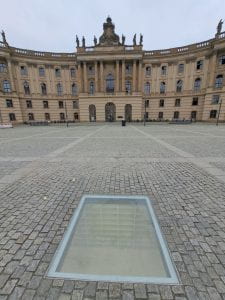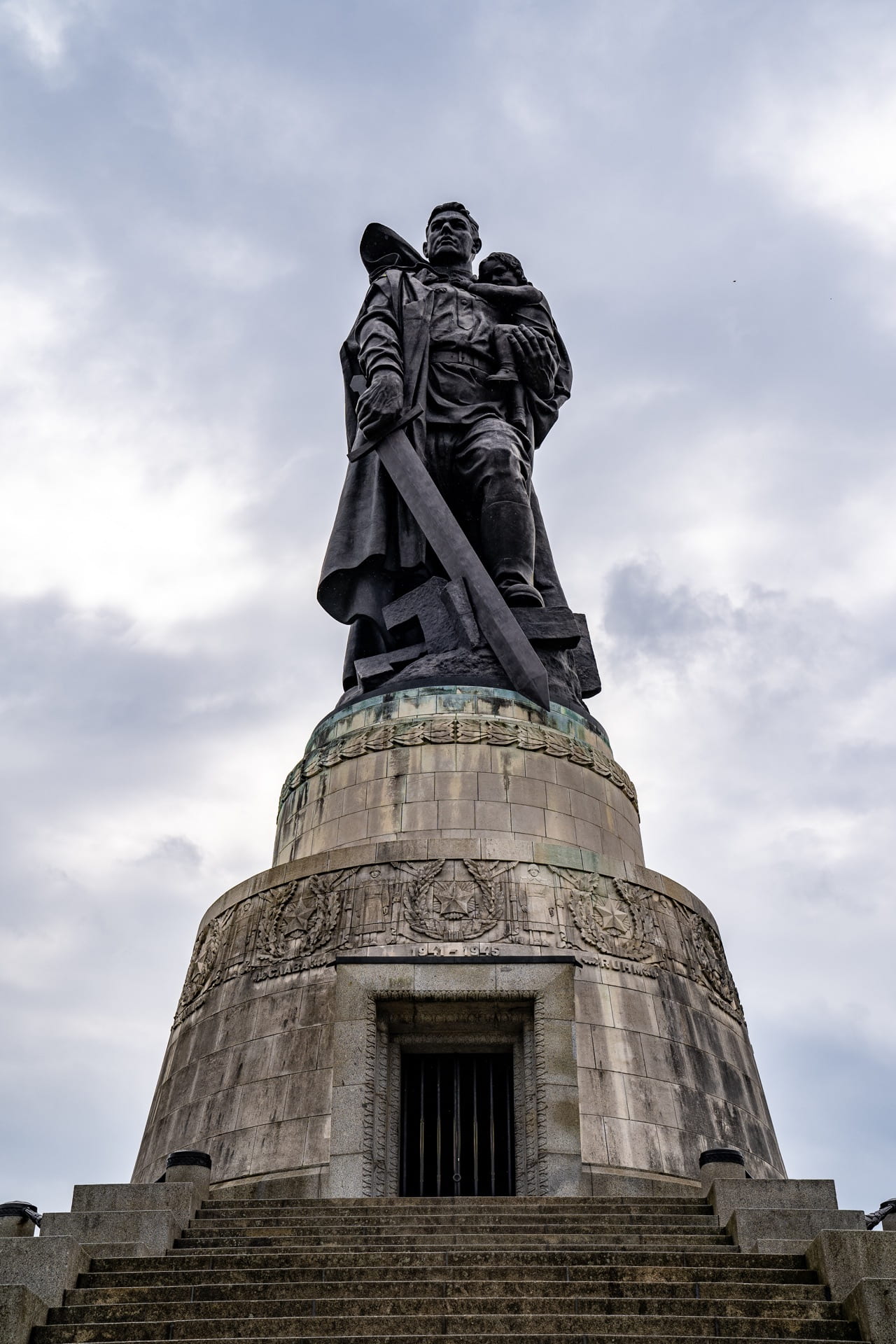In the final week of the program, our group traveled to Berlin where we visited museums, monuments, and sites throughout the city. Remnants of the war, and the subsequent Cold War, mark the city and help visitors realize the tollthat both the Holocaust and World War II had on the civilians of Berlin. However, the complicity of individuals and the general German population in World War II and the Holocaust were often in focus, especially at the Wannsee House and the Topography of Terror.

Pictured: Anhalter Bahnhof, a former large train station that was destroyed by Allied bombing in WWII
The Wannsee House details the Wannsee Conference in which Nazi leaders planned the “Final Solution,” the genocide of European Jewish people at extermination camps. In the Wannsee Protocol the sheer scale of the Nazis’ plan overwhelms visitors, a plan calculated to eliminate eleven million people. Though the Wannsee Protocol avoids using the term ‘genocide,’ the context of previous Nazi policies

Pictured: Nazi discussion of implementing the Wannsee Protocol in occupied nations.
and practices clarifies the true meaning of words such as ‘deportation.’ The Wannsee Conference was held after millions of Jewish people in Europe had already been murdered, and its sixteen participants planned the fates of millions more. Not only the Wannsee planners, but lower-level officers, common soldiers, and members of the police who carried out the Wannsee Protocol were integral to its implementation. Additionally, German citizens who benefitted from the Wannsee Protocol are complicit in the genocidal effects of the plan.
While visiting the Topography of Terror, a museum on the former site of the primary SS prison in Berlin, one confronts the complicity of German civilians in the atrocities. The SS, a Nazi paramilitary organization, enjoyed nearly unfettered police and military powers and under Heinrich Himmler carried out genocidal policies of the regime. Beginning with exhibits showing that Nazism held great influence throughout Germany, the Topography of Terror displays the complicity of Germans through images such as to the right: nearly an entire audience gives the Nazi salute to Hitler, highlighting the popular support that the Nazi Party enjoyed in 1936.  The exhibits then progress through the rise of the SS in Germany and the victims of the brutal organization. As the SS rose along with the backing of the Nazi Party, Germans who supported the regime effectively supported the SS. This support for the Nazi Party also supported the SS concentration camps, extermination camps, and the continuance of the organization’s extra-legal status. After the war, many claimed that the Nazi regime’s oppressive control left Germans no choice but to engage in its genocidal policies; however, exhibits such as the ones displayed in the Topography of Terror refute this claim. With the seemingly unanimous support that the Nazi Party had, it is certain that many supported the SS as well, not only due to the oppressive control of the regime.
The exhibits then progress through the rise of the SS in Germany and the victims of the brutal organization. As the SS rose along with the backing of the Nazi Party, Germans who supported the regime effectively supported the SS. This support for the Nazi Party also supported the SS concentration camps, extermination camps, and the continuance of the organization’s extra-legal status. After the war, many claimed that the Nazi regime’s oppressive control left Germans no choice but to engage in its genocidal policies; however, exhibits such as the ones displayed in the Topography of Terror refute this claim. With the seemingly unanimous support that the Nazi Party had, it is certain that many supported the SS as well, not only due to the oppressive control of the regime.
Both museums were good depictions of an event and an organization that greatly affected World War II in Germany. The Topography of Terror, with its early focus on the popularity of the Nazi Party, highlights the complicity of German citizens in Nazi crimes. The Wannsee Protocol’s enormous impact, as displayed at the Wannsee House, causes visitors to contemplate how many people were necessary for its implementation.


































